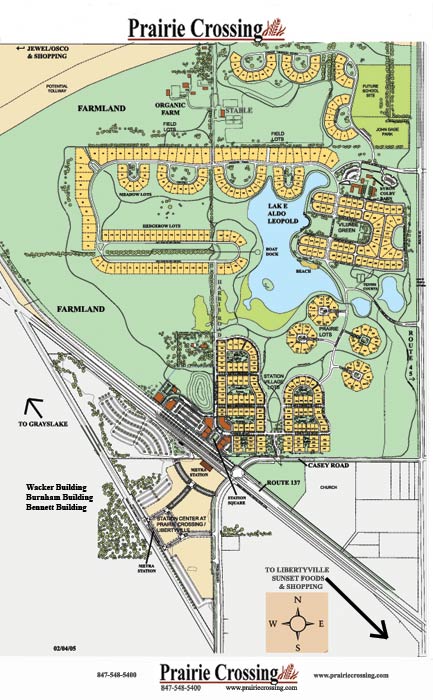Stormwater Management Conservation Design
Conservation Design
Conservation design is an approach to development that first looks at the natural landscape and ecology of a development site. The preservation of the natural features of a site is the priority of the design. Many conservation design developments have smaller lot sizes in order to preserve a larger amount of open space or wooded area. This open area is shared area for the entire development. The open space can be used for recreational purposes, kept in a natural state (or actively restored), or can be used for other purposes such as an organic farm.
An example of a successful local conservation design development is Prairie Crossing located in Grayslake. Prairie Crossings is a development consisting of single family homes, condominiums, charter school, organic farm, Metra train station and a recreational lake. Over 60% of the development is shared open land. Figure 8 is the site plan for Prairie Crossings.
The stormwater benefits of conservation design are drawn from the decrease in impervious surfaces. By clustering lots and limiting the impervious areas to one area, stormwater runoff is allowed to travel to the receiving body of water through the natural open spaces and riparian areas. The natural landscaping of the open areas generally have deeper root systems, which minimize erosion and increase water quality. The naturalized system is also expected to help reduce utility costs of storm sewer infrastructure. The benefits of conservation design are further described in the Conservation Design Strategy Paper.
